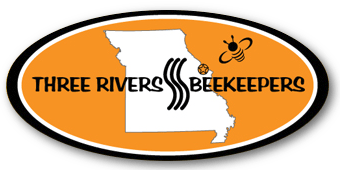One-third of our food is the result of pollination. Our native bees do their part – like the Mason bee (they love apple blossoms and blueberries) or the bumble bee (large enough to work a tomato or squash blossom by buzz pollination – literally vibrating the flower to release the pollen). But did you know that 80% of pollination is done by honey bees? Living in a colony of nearly 80,000 bees, honey bees can cover a large area.
Worker honey bees typically live about 4-6 weeks (first several weeks as house bees and then graduate to foraging bees for the last couple of weeks). The survival of the colony depends heavily on the forager bee’s success. The foraging bee is responsible for bringing nectar and pollen back to the hive, which is fed to growing bee larvae. Nectar (80% water) is fanned by house bees and converted into honey (16-18% moisture). Honey is capped and preserved for winter food. Honey bees do not hibernate. They cluster together, disengage their wings and shiver their bodies to generate heat to survive cold temperatures.
A foraging bee works very hard. She typically covers a 2-3 mile radius from the hive (approximately 8,000 acres!) searching for food. Now consider that she will make 8-10 trips per day, visiting between 50-500 flowers each time (depending on the quality and quantity of the source). These last few weeks of her life, this honey bee may travel 800 miles or more.
So what is my wish? That we make it just a little easier for our bees, and all pollinators, to get an ample supply of quality food. Planting a small pollinator garden (3’ by 3’) provides an excellent snack station. Can one garden really make a difference, you ask? Yes, every blossom counts. But…what if you challenge your neighbors, friends, family, classmates, or co‑workers to plant a pollinator garden too? All of a sudden, many snack stations become a pollinator buffet! You don’t have a yard? No problem. A large planter (or two) can be just as valuable. Check out these websites for tips on creating your pollinator garden:
https://www.gardendesign.com/perennials/pollinators.html
https://www.gardeners.com/how-to/pollinator-garden-design-for-bees/9144.html
by Jill James
Posted May 5, 2020
